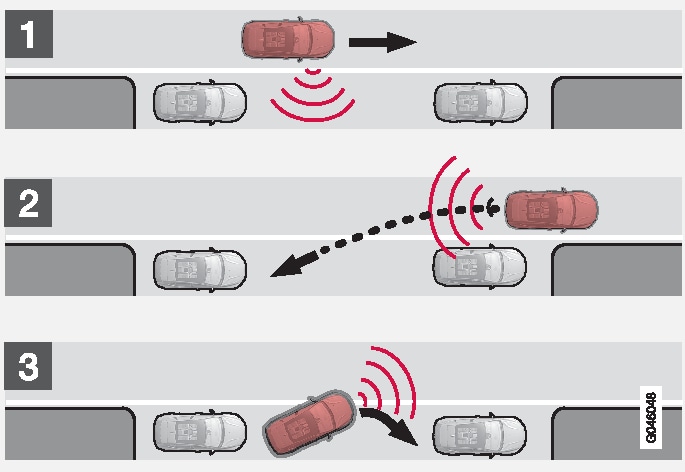The combined instrument panel uses symbols, graphics and text for when the different steps are to be carried out.
Note
The PAP function measures the space and turns the steering wheel - the driver's task is to:
- keep a close watch around the car
- follow the instructions in the combined instrument panel
- change gear (reverse/forward)
- control and maintain a safe speed
- brake and stop.
PAP can be activated if the following criteria are met once the engine has been started:
- The functions ABS1 or ESC2 must not intervene when the PAP function is activated - these can be activated in the event of e.g. steep and slippery surfaces, see the sections on Foot brake and Stability system ESC for more information.
- A trailer must not be connected to the car.
- Speed must be lower than 50 km/h (30 mph).

The PAP function parks the car using the following steps:
- The function searches for a parking space and measures it - during measurement, speed must not exceed 30 km/h (20 mph).
- The car is steered into the space during reversing.
- The car is positioned in the space by driving forward and back.